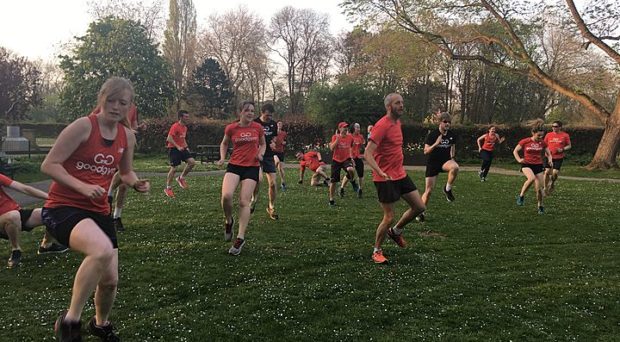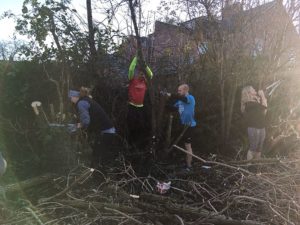
‘On our way back to the start location, we navigate around a couple of rough sleepers who are walking along slowly with big bags and sleeping bags. I always feel a sense of awkwardness and helplessness when we run past homeless people on the street wearing our GoodGym t-shirts. To me, people on the streets probably need help most urgently, and I wonder about the kind of good we do and the way in which our good deeds actually impact people who need it most immediately. They move to the side as we run past and I hear one of them saying to his friends in slurring words, ‘Let them past, let them past, they run and they do good stuff’, before shouting after us words of encouragement. We turn around and wave back to acknowledge that we heard…’ (Researcher field notes, September 2018)
The scene of a runner making their way along a street is a familiar one for those of us living in urban areas around the UK. At times it feels as if everyone has taken up running, particularly now gyms and other sport and physical activities are temporarily unavailable. Runners move through streets, parks, and tracks, their rhythmic footsteps navigating kerbs, traffic lights, and other road and pavement users.
What might not be so familiar is the scene of a group of runners – often a variety of ages and fitness levels – moving together with gardening gloves tucked into their waistbands, stopping to energetically tidy up a community garden, path, or other public space. They might then perform a few lunges and squats, before running away again. And yet these scenes have become familiar in over 50 urban areas across England and Wales.
Fitness philanthropy
I took part in GoodGym activity for 15 months in two urban areas in the north of England as part of my doctoral research into everyday forms of “fitness philanthropy”. Fitness philanthropy is a recent phenomenon whereby physical activity is used for a philanthropic purpose (such as raising funds or awareness for a cause or charity). I was intrigued to see how GoodGym harness fitness for broader health and social outcomes.

GoodGym describe themselves as a running community with a social purpose. They run together to complete community missions and tasks, helping charities and other community and voluntary groups. Individual runners also run to visit isolated older people in their homes.
Their philosophy is not just about helping and connecting with others, it is also about energy; about not “wasting” human potential, but instead harnessing it and using it for good. Moving through urban areas, it is easy to identify places and causes that could do with some energy, love, and care.
The methodology of the project was ethnographic, which meant taking an active role as a volunteer in the programs. I wanted to find out how they worked in practice, what people’s experiences were of the programs, and the broader health, social, and spatial effects that the activity brought about.
It would be easy to see GoodGym’s model of “getting fit and doing good” as simply “ticking all the boxes” – a pro-health, pro-social activity that helps people get fit whilst helping out community initiatives and public spaces. What a box-ticking approach misses though, is the way in which GoodGym activity takes place – literally – how it brings about physical and social engagements and interactions in an often highly visible public space. This is what we focused on in our recent analysis of the programs.
Physical fitness as more than individual health outcomes
What is interesting about movement-volunteering programs more generally is that they form a connective tissue between different collectives, for example the private and the public. This is not just in terms of services (e.g. health and social care services) but in terms of spaces, bringing movement, activity and social interaction into the domestic boundary of the home – for example meeting people at their doorstep and moving together outside as seen in the Move the Masses “Move Mates” program.
The challenge moving forwards is supporting these programs to become sustainable, embedded and connected whilst maintaining their fluidity and responsiveness in addressing emerging health and social issues.
What made activities like GoodGym feel real, meaningful, and memorable was often spontaneous events and interactions that happened during physical activity, and the relationships that participants built up over time with each other and with the spaces where they live and move through.
It reminds us that well-being isn’t a stable resource that we possess or own as individuals, or a transactional process, but an effect which is emergent through our encounters with others and the world. We see this quite simply in the way that moving together physically in GoodGym generates far greater therapeutic potentials than an individual doing the same activity alone.
Comments